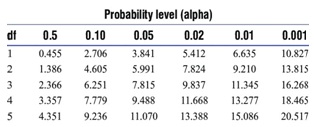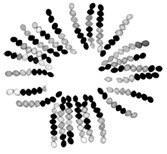Assignment:
1. In the year 4000, an exploration team brings back an unusual animal from the planet Zvorg named Cattusannoyingus (named for the space animal's annoying habit of whining loudly, biting one's ankles, and knocking over trash cans). Not surprisingly, it is an endangered species on Zvorg. You are trying to revive the species (much to the dismay of the Zvorgians). Coat characteristics in C. annoyingus are controlled by two autosomal genes, one of which is epistatic to the other. The coat can either be a dull brown (B) or golden (b). If the animal is golden, it can either be non-spotted (P) or spotted (p).
a) What are the possible genotypes and phenotypes if two heterozygote animals are mated to each other? Show how you came up with your answer.
b) What are the possible genotypes and phenotypes for the following cross: BbPp X bbPp. Show how you came up with your answer.
2. You are trying to determine whether the autosomal genes for stem color are linked to the autosomal genes controlling fruit color. Stem color can either be purple (G) or green (g), and fruit color can either be red(R) or yellow (r). You cross a plant which is heterozygous for both genes to a homozygous recessive plant. You obtain the following offspring:
GgRr 280 ggrr 285
ggRr 142 Ggrr 158
a). If the genes were not linked, what would be the genotypes of the gametes produced by each parent? Explain your reasoning.
b). If the genes were linked, what would be the genotypes of the gametes produced by each parent? Explain your reasoning.
c) Test the hypothesis that these genes ARE NOT linked by doing a ChiSquare test. You can assume that the degrees of freedom=3, p=0.05, and use the table below for your analyses. SHOW YOUR WORK. (expected, observed, calculations-as well as what your conclusions are. I need to see it).

d) Assuming the genes are linked, is the configuration cis or trans? Explain your reasoning.
e) Assuming the genes are linked, identify the recombinant classes and then calculate the map distance between G and R. Show your work!
3. You are studying two autosomal recessive mutations in fruit flies: folded wings and thick bristles. Wild type flies have straight wings and thin bristles. Females homozygous for folded wings and thin bristles were mated to males from a true-breeding strain with straight wings and thick bristles. The resulting F1 females are then mated to males that have folded wings and thick bristles to generate the F2 progeny.
(Note: Let wing shape alleles be represented by B (dominant) and b (recessive). Let bristle thickness alleles be represented by R (dominant) and r (recessive). USE THESE PLEASE!)
a) If you analyzed 200 males from the F2 generation, and you assume that the two traits are unlinked autosomal genes, how many flies of each possible phenotypic class would you expect? Show your work.
b) If you analyzed 200 males from the F2 generation, how many flies of each possible phenotypic class would you expect, if you assume that the two traits are linked genes on an autosome that are 15 cM apart Show your work.
4. The picture below shows a spread from Sordaria asci, representing a cross between wild type (black) and tan spore genotypes. (in this picture, black looks black, but the tan looks gray)

a) Describe how meiosis in Sordaria produces the parental (nonrecombinant) phenotype.
b) Describe how meiosis in Sordaria produces the recombinant phenotype(s).
c) Identify the number of nonrecombinant and recombinant asci in this diagram. Then, calculate the recombination frequency and the map distance between the wild type and tan genes. Show your work.
5. You are working with three X -linked genes in Drosophila:
One gene is for eye color (A: dominant; a: recessive)
One gene is for wing shape (D: dominant, d: recessive)
One gene is for body color (B: dominant; b: recessive)
You start by crossing a female pure-breeding fly which has red eyes, long wings, and a black body to a male fly that has white eyes, short wings, and a brown body. All the resulting F1 flies (males and females) have red eyes, long wings and black bodies. A friendly cell biology professor tells you that the gene for wing shape is the middle gene of these three X-linked genes!
a) Based on this information, and using the information above, identify the alleles for the dominant and recessive phenotypes for each of these three genes (ie what eye color is A? what eye color is a? and so on).
b) What would be the genotype of the F1 females? What would be the genotype of the F1 males?
c) An F1 female is crossed with a male who is hemizygous for all recessive alleles. The resulting F2 male offspringphenotypes and numbers are shown below. Identify the genotypes of all the F2 males shown in this table.
|
Phenotype
|
Number of offspring
|
|
Red, long, black
|
1800
|
|
White short brown
|
1785
|
|
White long black
|
125
|
|
Red short brown
|
132
|
|
Red long brown
|
201
|
|
White short black
|
199
|
|
White long brown
|
5
|
|
Red short black
|
7
|
d) Which phenotypes represent the double crossover? Why did you choose this? Calculate the recombination frequency of the double crossover.
e) Which phenotype represents the single cross over between the eye color gene and wing shape gene (remember, wing shape is in the middle)? Why did you choose this? Calculate the recombination frequency of this single crossover.
f) Which phenotype represents the single crossover between the wing shape gene and the body color gene? Why did you choose this? Calculate the recombination frequency of this single crossover.
g) Now, calculate: the distance (map units) between the eye color gene and the wing shape gene AND the distance (map units) between the wing shape gene and the body color gene.